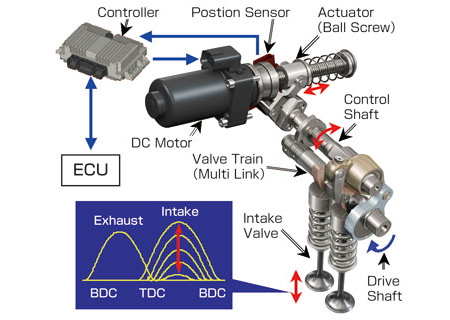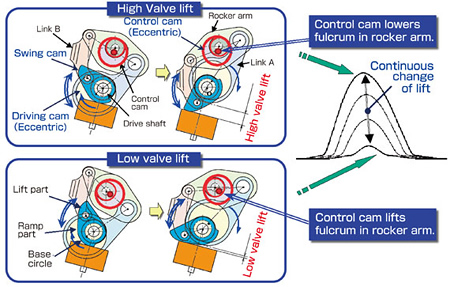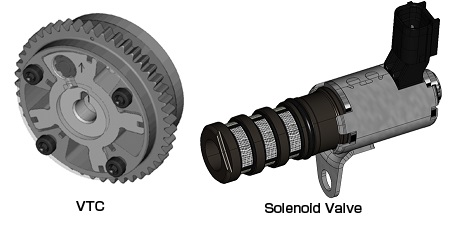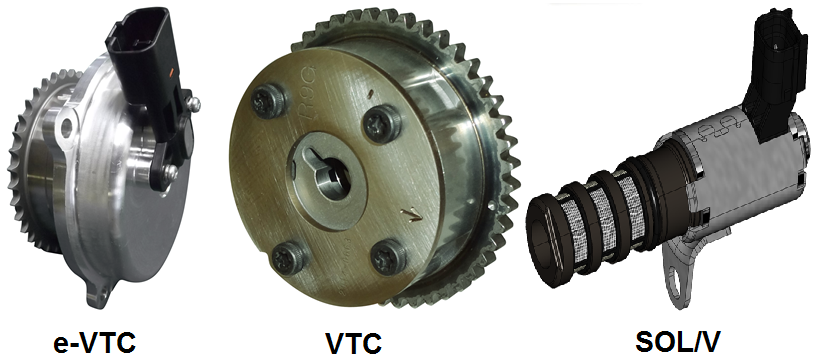

VTC system is the combination of VTC and Solenoid Valve (SOL/V). VTC continuously varies valve timing with engine speed, temperature, and load of engine. Valve timing has been fixed by opposing requests of various engine operations. However, VTC achieves continuous and optimum valve timing in all gasoline engine operation.
Engine Control Unit(ECU) computes the required information of engine speed, temperature, and accelerator opening, and sends the control signal to Solenoid Valve. Oil pressure controlled by Solenoid Valve continuously controls VTC.
Optimum valve timing in all engine operation improves Nitrogen Oxide(NOx) and Hydrocarbon(HC) in exhaust gas and greatly improves fuel economy, engine power and engine performance.

